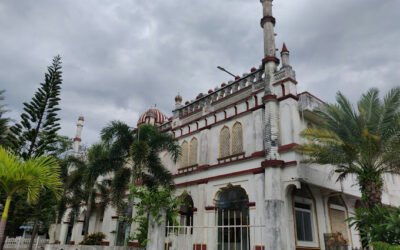Jami Ul-Alfar Mosque
-
Jami-Ul-Alfar Mosque, also known as the Samman Kottu Palli, Rathu Palliya, Red Musjid, or the Red Mosque, is a notable historical Musjid in Colombo, Sri Lanka. Located on Second Cross Street in Pettah, it is one of the oldest Musjids in the city and a popular tourist attraction.
-
Construction of the Jami-Ul-Alfar Musjid began in 1908 and was completed by 1909. The Musjid was established by the local Indian Muslim community in Pettah to meet the needs of their five-times-daily salaah and Friday Jummah prayers. Habibu Lebbe Saibu Lebbe, an unlettered architect, designed and built the Musjid based on images and details of Indo-Saracenic structures provided by South Indian traders who commissioned him. The architectural style is a hybrid, incorporating elements from Indo-Islamic and Indian architecture, along with Gothic revival and Neo-classical styles. Initially, the Musjid could accommodate 1,500 worshippers, though only about 500 attended prayers at the time.
-
The Musjid is easily recognizable by its distinctive red and white candy-striped two-storey structure, complete with a clock tower. It bears a resemblance to the Jamek Mosque in Kuala Lumpur, Malaysia, which was constructed in 1910. Before other landmarks were established, the Jami-Ul-Alfar Mosque was often considered a key landmark for sailors approaching the Colombo port.
-
In 1975, with the help of the Haji Omar Trust, the Musjid purchased several adjoining properties and began expanding its capacity to accommodate 10,000 worshippers.

